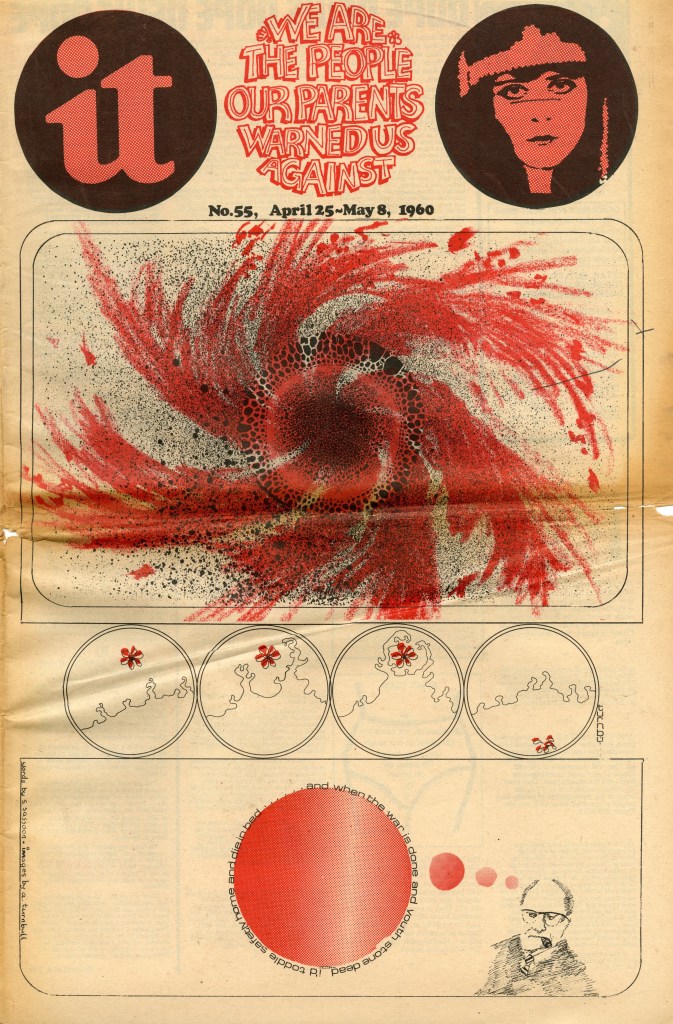England was the epicenter of cool during the ’60s, not only because the Beatles and Stones spawned some of the great music and fashion innovations of the era, but also due to the wellspring of underground newspapers there. Working at undergrounds gave me access to periodicals from all over the world. IT (International Times) and Oz where the two most influential for their design and content. Muther Grumble was one of the many others that filled mailboxes.
Founded in 1966 (contrary to the 1960 dateline on the issue above), International Times was one of the earliest and most important British underground papers. After being threatened with lawsuits by the London Times, International Times changed its name to IT, but often kept the original name as a subhead on its covers. In its heyday, IT appeared regularly for 13 years. The paper’s logo was an iconic black-and-white image of Theda Bara. Contributors included most of the prominent underground figures of the period, including Allen Ginsberg (who interviewed the Maharishi), William S. Burroughs, Germaine Greer, John Peel, Heathcote Williams and Jeff Nuttall.
Oz magazine was cited by the V&A (which holds its archive) as “one of the most important records of 20th-century counter-culture and revolution.” It published 48 issues between 1967 and 1973, covering everything from gay rights to racism to “the environment, feminism, sex, the pill, acid, rock music and the Vietnam War.” Its three editors, Richard Neville, Jim Anderson and Felix Dennis (who later went on to be a publishing mogul of Maxim, Stuff and Blender), were all defendants in the longest obscenity trial in British history after the magazine was raided by the obscene publications division of the Metropolitan Police. The trio were charged with conspiring to corrupt the morals of the young for Oz #28, an issue created entirely by school children. Other than that historic bump in the road, the magazine was famous for its psychedelic covers by pop artist Martin Sharp, cartoons by Robert Crumb, radical feminist thought by Germaine Greer and articles that challenged convention.
Finally, Muther Grumble published 17 issues over two years between 1971 and 1973 in Durham City in Northeast England. As noted on its archive site, “It was produced by a motley group of people consisting of students, workers, the unemployed, trade unionists, pensioners, hippies, artists, etc., etc.—anyone who wanted to be involved could be. Its aim was to give a voice to the people of the Northeast and act as a link between the many varied community/self-help groups that were springing up throughout the region at that time.
The post The Daily Heller: When Undergrounds Shined the Light appeared first on PRINT Magazine.

